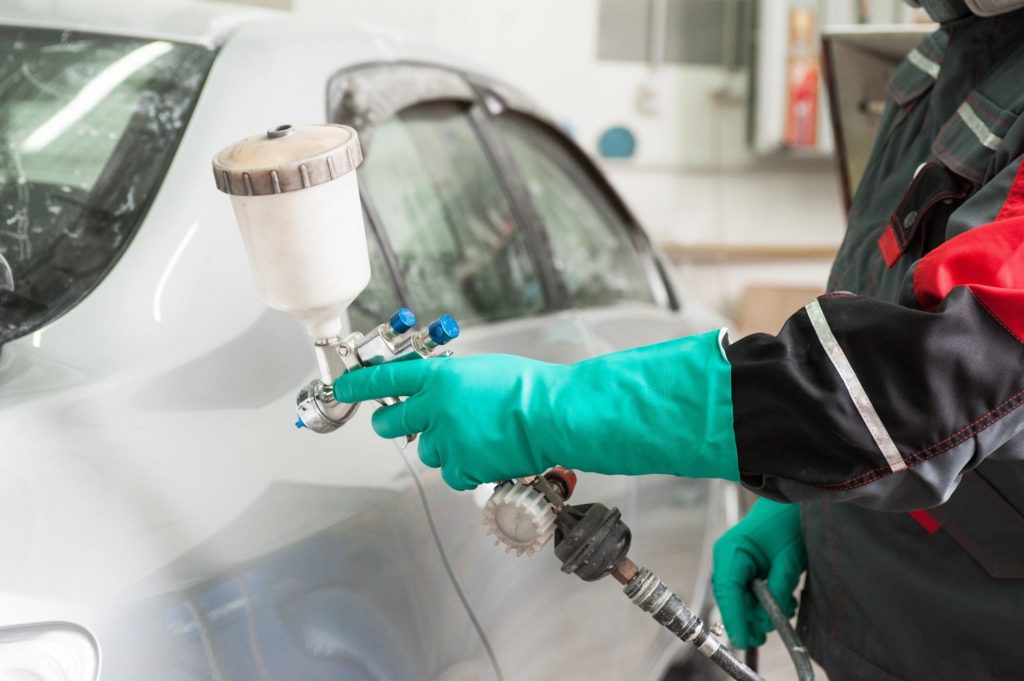Auto Paint Services

Auto Paint Services
Auto Restorations Auto Body & Paint, Inc.’s quality paint application makes a difference. Our experienced PPG certified auto paint technicians follow industry standards preparing the body surface, applying primer, paint and finish coats that will return your vehicle to as good as new.
Our key to a quality paint job is to not cutting corners by following the following steps.
1. Deconstruction
The first step to a quality paint job is removing all the little bits of trim, emblems, and non-painted parts. Some shops will tape around windows, gaskets, bumpers, emblems and door handles. When this is done you end up with a paint job that will show strong tape lines and could possibly start pealing from these areas. At Auto Restorations Auto Body & Paint, Inc. we remove these items to give your vehicle complete paint coverage. This is not the cheapest way to do a paint job, but it is the right way to do a proper lasting paint job. Removing everything on the body is important for a quality job.
2. Prime and Sand Time
The next step is primer. Paint needs primer, in all cases. You cannot spray paint over anything else and expect it to look good or even stick to the vehicle. When we prepare a body for paint, there are several types of primer coats, depending on the type of repair. When the primer application is completely dry, it must be “hand-sanded” and/or “block sanded” to prepare your vehicle for next step in the paint process. The sanding process could be repeated several times before moving on to the “base coat”/ “color coat”, depending on the repair.
3. Final Prepping for Paint
Depending on the type of repair, Auto Restorations Auto Body & Paint, Inc. will use a combination of proper painting and masking material to keep from “over spraying” (getting paint where it does not belong) your vehicle. Then Auto Restorations’ uses two items – wax and grease remover, and a tack wipe- to clean the surface before painting. Wax and grease remover is a solvent liquid that removes fingerprints and residue. The tack rag is a piece of cheesecloth with a special sticky substance on it. It is designed to pick up dust and hair from the surface. This cloth is wiped across the surfaces right before painting.
6. PPG Finishing Coats
The base coat contains the visual properties of color and effects, and is usually the one referred to as the paint. To achieve specific visual effects with the paint color, the painting technique is done in stages. Vehicle paint stages are from 1-5 stages. Currently; the most common stage is a 3-stage paint color. As the name implies, there are multiple coats of paint layers that are applied to attain a certain result. After the base coat is applied to your vehicle the clear coat is added. Clear coat is a glossy and transparent coating that forms the final interface with the environment. For this reason, clear coat must be durable enough to resist abrasion and chemically stable enough to withstand UV light. The last application is the “clear coat”. It works like a “sun screen” barrier of protection for your color coat and creates a lasting shine equal to a new vehicle. After the vehicle paint applications are completely dried, the car is returned to the body technicians for re-assembly.
Painting a vehicle is an art; from mixing to spraying the colors. Every part of this processes is important for a quality paint job. Our professionally Certified Sherwin-Williams painters will be able to determine the proper types of paint, color, and staging for your specific vehicle. Using our Sherwin-Williams computerized Touch Mix System our experienced master painters will match and spray your color flawlessly.
